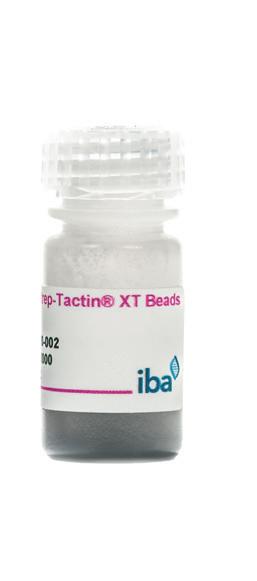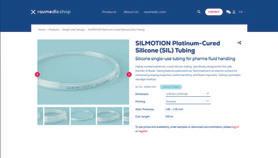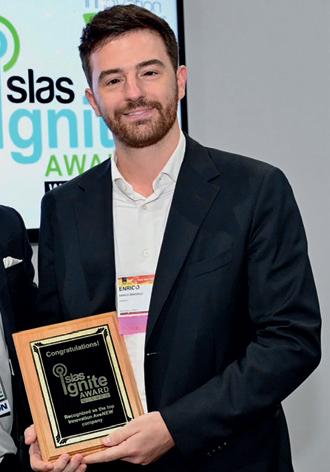Technology + System Integration





CONFERENCE The world’s most important conference for laboratory automation and drug screening, SLAS 2025 International, saw a record of 409 exhibitors, 7,100 visitors and 99 market launches of products. The most relevant developments came from Systemic Bio that won the US$10,000 SLAS Innovation Award 2025 and the New Product Award winners Semarion Ltd and US start-ups n6Tec Inc and Portal Biotechnologies Inc. But there is much more to come.
At the 2025 Annual International Conference of the Society for Laboratory Automation and Screening (SLAS), it became clear that personalised medicine, as a first step towards P4 (preventive, predictive, personalised, participatory) medicine, is getting closer.
A dominant topic at SLAS 2025 was again how to integrate artificial intelligence (AI) into automated iterative workflows of the Design-Make-Test-Analyse
(DMTA) cycle to improve the costly, low success rate (5%-15%) of preclinical to clinical development. A striking number of companies exhibited systems that sort, cultivate and analyse cells, human spheroids and 3D organoids using AI-supported image recognition. For the first time, SLAS presented the interactive NexusXp Pavilion to showcase successful examples of automation integration and collaboration scenarios improving R&D
DR PHILIP GRIBBON, President in 2025 of the Society for Laboratory Automation & Screening in 2025 (Fraunhofer Institute for Translational Medicine and Pharmacology, Hamburg)
I’m very excited to invite the European Biotechnology community to Hamburg for the SLAS Europe 2025 Conference & Exhibition. This conference is an excellent platform for technology providers and users to exchange ideas and make connections, all under one roof in a collaborative atmosphere.

We have a strong SLAS community in Hamburg but our conference at-
tracts researchers and tech providers from around the world, to transform the work being done in life sciences research. We’re especially proud to be able to showcase our local expertise on 20 May by hosting technology provider tours and scientific discussions at a few of our industry leaders’ locations – AcCELLerate, Evotec, and Fraunhofer ITMP / Revvity – in addition to our two-day scientific program and exhibition.
Hamburg has worldclass academic institutions, and it is also a great place to enjoy culture, music, nature, or rent and ride bikes around the beautiful Alster Lakes! Come and enjoy the Science City with us! ■
productivity in a “lab of the future”. An important question was how a lab can integrate various technology providers’ automation solutions to work in unison through the four pillars of the DMTA cycle to decrease the current up to 30% of the expenditure on a new drug discovery programme. Stef van Grieken, co-founder and CEO of Cradle Ltd, told Europ Ean Biot E chnology that though challenges remain, embedding automation and AI into customers’ discovery workflows is key to optimising experimental design, accelerating iteration cycles, and unlock the full potential of AI-guided protein engineering. “As automation and machine learning converge, the future of drug discovery will be faster, more scalable, and increasingly driven by data,” he stated. While AI-based image analyses are increasingly finding their way into automated cell cultivation, sorting and high-content screening (HCS) systems, the sector is still in the testing phase for AI solutions that analyse the binding and aggregation behaviour, toxicity and other aspects of the druggability of biologics. The algorithms do not yet work as well for complex new drug formats filling drug pipelines such as bispecific antibodies, PROTAC s or multispecific ADCs as they do for small molecules or monoclonal antibodies. Nevertheless, Dr Romelia Salomon from the Alphabet spin-out SandboxAQ Inc (Palo Alto, market capitalisation US$5.6bn) presented the opportunities identified in collaborations for using the company’s proprietary numerical Large Quantitative Models (LQM) to pre-
dict the toxicity, solubility, synthesisability and efficacy of drug candidates. With the LQM AI alternative to Large Language Models (Deepseek, ChatGPT), SandboxAQ and partners have so far produced 22 preclinical candidates, ten completed Phase IIa programmes and 54 papers, Salomon reported in a SLAS Ignite Collaboration lecture.
According to Markets & Markets, the global market for lab automation remains set for significant growth. The market research experts estimate that the market will grow from US$5.85bn in 2024 to US$7.71bn in 2029 along with the global market for drug discovery services that is expected to double by 2028, from the current US$20.7bn to US$41.4bn. At SLAS 2025 International, which featured more than 150 lectures in eight thematic streams, groundbreaking product in -

Taci Pereira, CEO of Houston-based Systemic Bio Inc, presented the latest organ-onchip technology predictive for liver toxicity.
novations were shown at the exhibition, particularly from the 27 finalists of the SLAS New Product, Ignite and Innovation Awards. This year’s winning team of the SLAS Ignite Award for the most innovative
automation start-up presented an innovation that promises to significantly facilitate the search for life-prolonging cancer drugs. Until now, the success rate of drug screening in oncology has been extreme-



MagStrep® Strep-Tactin®XT Beads close the gap between computational protein design and experimental proof. Optimized for automation and scalability, they transform protein purification from a bottleneck into a streamlined process.

ly poor. Despite implementing hundreds of strategies, cancer drug development suffers from a 95% failure rate over 30 years, with only 30% of approved cancer drugs extending patient survival beyond 2.5 months. One reason is the complexity of solid tumours, another is the lack of test systems for preclinical drug screening that realistically simulate the physiological conditions in the tumour (TME). But this could now change. InSimili srl from Bologna has developed a microtitre plate that sets the exact oxygen concentration – or gradient – in the well that prevails in the TME. The company’s Oxygen Control Plates, which contain a hydrogel mimic the hypoxic and acidic milieu and glucose concentration found in tumours, are designed to de-risk preclinical development in cancer, according to CEO Enrico Grassilli.
Innovation at its best
At the end of January, an innovation aimed at reducing animal testing through more realistic in-vitro disease models received the US$10,000 Innovation Award. Taci Pereira, CEO of Systemic Bio from Houston prevailed against nine finalists in San Diego. Despite advancements with models such
as spheroids, organoids, and organ-onchips, and in silico strategies, a persistent challenge during the past two decades has been the generation of human-relevant, reproducible preclinical data at scale, she said. Traditional animal models yield a preclinical failure of 85-95% due to intrinsic differences from human pathophysiology, while overly simplistic in vitro models struggle to capture the complexity of human biological processes crucial for assessing therapeutic safety and efficacy. In her presentation “h-VIOS: A human-relevant drug discovery and development platform using bioprinted human tissues”, Pereira explained how h-VIOS organ-on-chip technology from Texas-based Systemic Bio Inc improves preclinical safety and toxicity assessment. Systemic Bio Inc, a subsidiary of 3D printing specialist 3D Systems Inc, has succeeded in using 3D printing to produce vascularised hydrogels at scale that are compatible with numerous cell types such as healthy and diseased cells, stem cells and human primary cells (hepatocytes). “The h-VIOS™ platform delivers bioprinted organ-chips that enable therapeutic delivery through endothelialised vasculatures into complex, three-dimensional tissues,” Pereira stressed. “This modular and customisa-
ble system enables the generation of multimodal data, ranging from high-content imaging to transcriptomics.”
Pereira showed data demonstrating that parallelised h-VIOS organ-on-chips can be used to determine drug-induced vascular injury (DIVI) and drug-induced liver injury (DILI) as the organ-on-chips mimic essential functions of a human liver. In an ISO-7 clean room facility in Houston, which is subject to a quality management system, Systemic Bio can produce thousands of tissue models that replicate human organ systems with high precision. Thus, the platform represents a significant advance in preclinical testing and supports collaboration with leading pharmaceutical companies.
A total of ten product developments, which the SLAS jury believes will significantly advance drug screening, qualified for the final of the SLAS New Product Awards. In the end, there were three winners: British Semarion Ltd as well as the US companies n6Tec and Portal Biotechnologies shared the prize for the breakthrough product, set to have the most impact on drug discovery.
The Semacyte platform developed by Semarion, who had won the last Ignite Award at SLAS Europe 2024 in Barcelona, enables adherent growing cells to be mobilised, magnetically aligned and tracked using microcarriers without losing the morphology and function of the cells, so that they can be handled and optically analysed with wide-field microscopy using standard liquid handling tools used in drug development. “Receiving the SLAS 2025 New Product Award for our SemaCyte Microcarrier Platform is an important validation of our approach to revolutionising adherent cell assays,” Jeroen Verheyen, co-founder and CEO of the University of Cambridge spin-out Semarion Ltd, told EuropE an BiotEchnology. “SemaCytes push the boundaries of traditional workflows by converting adherent cells into barcoded reagents that can be frozen, multiplexed and seamlessly integrated into microplate-based assays, enabling assay miniaturisation, higher through -
put and better data generation,” he said. “The recognition by SLAS and the enthusiasm of pharma and biotech companies at our booth demonstrate the transformative potential of our technology,” added Tarun Vemulkar, Co-Founder and Chief Technology Officer of Semarion. Verheyen stated: “Winning this award is an exciting step forward in our expansion into the US market and we look forward to seeing how SemaCytes will continue to reshape the future of cell-based assays.” The company’s platform addresses fundamental bottlenecks in rapid data generation, offering an up to a tenfold increase in throughput and a sixfold reduction in costs for drug discovery workflows. Last year, the company established several partnerships through an early adopter programme with pharma companies and CROs, followed by commercial launches in the UK and EU.
Two-year-old Portal Biotechnologies Inc was also awarded for its Galaxy plat-
form for high throughput intracellular delivery of virtually any molecular cargo into any cell type, enabling unique applications across drug screening and cell therapies. Galaxy mechanoporates cells in a high-volume fashion through a silicon membrane at low pressure, inducing holes in the cellular membrane temporarily. It integrates with all liquid handlers to enable high-throughput assays and screens by dispensing mechanoporated cells. The Boston-based start-up, which emerged from obscurity in 2023, has faced rapid adoption of its Galaxy platform.
In December, Portal Bio announced that it had already secured 50 partners, including seven of the top ten pharma companies, as well as US$7m in seed funding led by IA Ventures with participation from Pear VC, which had already led US$5m in pre-seed funding. “We look forward to further expanding our footprint by bringing new opportunities to our biopharma part-

Largest selection of enzymes for genomic research
Research-grade and GMP-grade production
Large to small scale lyophilization capabilities ISO 9001 and ISO 13485 certified
Formulations without components such as BSA, detergents or glycerol
Enzymes at user defined concentrations
Custom aliquoting, kitting, packaging & private label (OEM)
Further information on Customized Products and Solutions from NEB
ners and joining forces with additional innovative technology partners,” said Crystal Tsui, Scientific Partner at Portal Biotechnologies Inc. Portal is a member of the Bayer Co.Lab, a cell and gene therapy accelerator co-located with the Bayer Research and Innovation Center (BRIC) in Kendall Square. “We are delighted to receive the New Product Award in recognition of our potential to support a new generation of cell engineering and drug discovery capabilities,” added Tsui. “We are especially grateful to our early partners, including Eppendorf and Promega, for supporting our rapid development and early adoption by our customers,” she added.
California-based n6Tec Inc presented a solution to current limitations of PCR, i.e. suboptimal cycling conditions often undermining its efficacy, generation of chimeric products, exacerbation of PCR duplication rates, and species misrepresentation in metabarcoding experiments due to the preferential amplification of
dominant populations. The inventor of semiconductor-based iconPCR unveiled the world’s first real-time thermal cycler with 96 individually controlled wells at AGBT 2024 and now presented it to a wider audience at SLAS 2025. By setting a predefined fluorescence threshold, iconPCR ensures that all SBS-based Next Generation Sequencing (NGS) libraries are amplified to equivalent levels, thereby eliminating the risks of over- or underamplification through a process known as “Auto-Normalisation.” “We thank the judges and the SLAS organising committee for awarding iconPCR the New Product Award at SLAS 2025,” Yann Jouvenot, Head of Product at n6Tec Inc, told EuropE an BiotEchnology. “We hope this is seen as an illustration that no technology is too established to be improved upon. We wish that iconPCR can continue to improve data quality and streamline NGS workflows for genomics users across the world.” You should also keep
an eye on the seven non-award-winning product innovations and eight runnersup in the SLAS Ignite Awards.
› NanoTemper Technologies (Dianthus uHTS) presented an ultra-high throughput system that measures binding events in a mass-independent manner based on the change in the spectrum of a fluorophore bound to the target or drug compound.
› ThinkCyte Inc. (VisionCyte) has unveiled the first cell sorter that combines label-free and morphometric cell sorting with the analytical capabilities of FACS.
› Ramona Optics Inc (Vireo™) has developed the world’s fastest live-cell imaging system. Ramona’s synchronised array is twelve times faster than any high-content imager. The system can differentiate cytotoxic from cytostatic compounds, analyse growth dynamics of 3D tumour organoids,

and quantify morphological features across thousands of conditions.
› Partillion Bioscience Corp‘s Nanovial Multicell Assay Kits allow high throughput studies of cell-to-cell interactions such as antibody-antigen binding, immune cell activation, and cell-to-cell signalling in their natural context by co-localising multiple cell types within microscopic compartments.
› Last year’s SLAS New Product Award winner CytoTronics Inc (Pixel™ Octo) presented a benchtop plate reader for its electric field impedance-based semiconductor Pixel plates within an incubator that increases the scale at which researchers can functionally characterise live cells without any limitations of spatial resolution or throughput seen in common CMOS multielectrode arrays. Pixel plates also overcome a limitation of high-content imaging systems, which only allow endpoint images of fixed cells. Using 4,096 electrodes at 25 µm spatial resolution per well to measure 20 different morphological properties of cells including cell barrier, attachment, flatness, and motility every 15 min, Pixel Octo can acquire data from up to eight 96 or 384 well Pixel microplates. Additionally, it can monitor electrophysiological signals from cardiomyocytes and neurons, and the oxidative state of cultures in a single assay and is set to yield more impressive results in compound screening than its smaller predecessor.
› Hamilton Company unveiled Microlab PuriFY, its latest innovation in magnetic bead-based nucleic acid purification for NGS and PCR applications.
› Automata Ltd launched an AI-enhanced update of its vertically integrated automation platform LINQ that connects existing hardware using a robotic arm and a transport layer, both of which handle labware and consumables throughout the workflow, without compromising instrument accessibility or lab space. Instruments and data are digitally linked via a Python-based software.
The advancement and integration of European start-ups’ systems into the automation landscapes of pharmaceutical, laboratory and service companies will be the subject of SLAS Europe 2025 in Hamburg in May (20-22-5-2025).
The laboratory automation and life sciences research communities will meet at the SLAS Europe 2025 at the Congress Center Hamburg (CCH), 20-22 May. Hamburg’s world-class academic institutions will be well-represented with Jan Baumbach, Ph.D., delivering the opening keynote address on 21 May. On 20 May, three local companies – AcCELLerate, Fraunhofer ITMP/Revvity, and Evotec – will open their doors for half-day scientific discovery sessions. This year’s conference includes three scientific tracks:
› Advances in Drug Discovery
› Advances in Lab Automation, and
› Screening Applications & Diagnostics
Poster presentations are still being accepted until 28 April. ■ t.gabrielczyk@biocom.eu




ISBN 978-3-928383-95-0
+49 (0)30/26 49 21-0 service@biocom.eu www.biocom.eu

CANCER Italian InSimili Srl has been awarded the Ignite Award at SLAS 2025 in San Diego for the most innovative start-up company in the lab automation sector. European Biotechnology, partner of the Society for Laboratory Automation and Screening (SLAS), spoke with Enrico Grassilli, CEO of InSimili, about technology applications and future plans of the University of Bologna spin out.
EuroBiotech _Congratulations on winning the SLAS Ignite Award! Can you please briefly explain what your invention looks like and where you see its application?
Enrico Grassilli _Thank you! Winning the SLAS Ignite Award is a great recognition of our team and mission at InSimili. Our invention is an advanced cell culture plate with a patented biocoating that accurately controls oxygen levels directly inside the wells of standard culture plates. This enables us to provide ready-to-use plates with different levels of hypoxia and 3D oxygen gradients. Researchers can use our technology to easily recreate physiological and pathological conditions – such as tumour microenvironments, ischemiareperfusion injury, and neurodegenerative disease models – directly in vitro. Thanks to the accessibility and scalability of this technology, we believe that physiopathological models made with our plates can provide more predictive results early in the preclinical stages of drug development, derisking clinical trials.
EuroBiotech _How exactly does Insimili manage to adjust the oxygen and glucose concentration in the well? Grassilli _Our technology is based on an active biomaterial coating that contains enzymes and proteins that regulate the concentration of oxygen and nutrients in the culture media. As long as the media are replaced, the coating reaction continues, maintaining stable

ENRICO GRASSILLI is the CEO of InSimili Srl in Bologna, Italy. He holds a Master of Science in Mechanical Engineering from the University of Illinois at Chicago and Polytechnic Institute of Turin. Prior to joining InSimili he lead micro fluidics engineering at the biotech startup Chronus Health in Silicon Valley.
oxygen levels for several days. This is achieved without the need for external tubing, gas control chambers, or perfusion systems. Researchers can simply use our plates like any standard cell culture consumable, making it easy to integrate into existing workflows
EuroBiotech _Does the system also takes into account that tumours at different development stages show different oxygen concentrations? If so, how does this work?
Grassilli _Absolutely, we are working with several research groups and companies on oncology applications. One of the biggest challenges in cancer research is replicating the dynamic oxygen gradients found in tumours. Early-stage tumours may have higher oxygen levels, while aggressive, hypoxic tumours are more resistant to therapy. We can apply our coating to the wells with distinct configurations that recreate these gradients. Then, we can include multiple configurations within a single plate by adjusting the oxygen levels well by well. This means that we can effectively model different tumour stages in a single 96-well plate and study how therapies respond under realistic conditions.
EuroBiotech _Keyword: system integration – how can your system be integrated into automated environments, and how are signals read out and analysed?
Grassilli_Our plates are designed to be fully compatible with standard lab automation, including high-throughput screening (HTS) platforms, liquid handlers, and imaging systems. Since there’s no need for external gas control, they can be used seamlessly in automated workflows. They are compatible with most of the standard imaging readouts, including bright-field and fluorescence. However, the most interesting applica-
tions are the ones involving high-content imaging, since it can fully exploit the complex insights coming from cells growing under the oxygen gradient we recreate.
EuroBiotech _Do you already have partnerships and what are your goals in this regard?
Grassilli_We have ongoing pilot studies with contract research organisations (CROs), pharmaceutical and biotech companies, as well as collaborations with leading academic institutions. We are currently working with early adopters to validate our technology in oncology, and cardiovascular research. In the next months, we expect to announce longterm collaborations with some of these partners to develop specific applications and assays.
EuroBiotech _As far as we can tell, just one month after SLAS 2025: What has Insimili gained from participating in the award?
Grassilli_Winning the SLAS Ignite Award has been an honour and a blessing. It has significantly increased our visibility in the life sciences industry, leading to new partnership discussions and pilot studies with top pharma and biotech companies. But most importantly, it gave us access to the great network of experts and leaders in the lab automation and life sciences industry, which will be crucial to support our growth.
EuroBiotech _What are Insimili’s next goals?
Grassilli_Our immediate focus is publishing relevant application notes, posters, and papers on our technology with partners. Also, scaling up manufacturing to prepare for future growing demand. To do this, we are securing investments, and recently entered the acceleration programme Ready2Scale for promising Deep-Tech Startups in Europe. In the long term, we want to develop assay kits that include oxygen monitoring and target specific applications in oncology research.
■ t.gabrielczyk@biocom.eu
Nanopore-Sequencing Researchers at Roche have introduced a greatly improved nanopore sequencing method that has the potential to revolutionise nextgeneration sequencing . The scalable and flexible “Sequencing by Expansion” (SBX) promises to speed up genome sequencing enormously which might contribute to multiple biomedical applications as called for in a position paper “The untapped potential of Comprehensive Genomic Profiling” published the European Coalition for Comprehensive Genomic Profiling (ECGP) and the pharma federation EUCOPE in March. both interest groups lobby to widen the still limited access to comprehensive genomic profiling in Europe, that is “blocking routine testing for relevant cancer mutations and the rapid adoption of personalised medicine in Europe,” they say.
In contrast to Illumina’s sequencing standard Sequencing by Synthesis (SBS), Roche’s new chemical process is based on the expansion of target nucleic acids passing through a nanopore (10.1101/2025.02.19.639056v1). The individual bases are expanded into surrogate polymers, so-called Xpandomers. These reporter molecules are many times longer than the original nucleic acid sequence and therefore generate particularly strong signals with minimal background noise –the biggest problem with other nanopore sequencing approaches to date.
According to Matt Sause, CEO of Roche Diagnostics, the technology is suitable for a wide range of genome, exome and RNA sequencing applications. It can sequence up to seven complete genomes per hour at 30x coverage, which equates to 5 billion duplex reads per hour – in both strands of DNA sequenced simultaneously.
The first innovation is the SBX expansion approach developed by Mark Kokoris and Robert McRuer at Stratos Genomics, which Roche acquired in 2020. The
aim was to overcome the limitations of previous methods, which lie in the dense packing of nucleic acid sequences and lead to a poor signal-to-noise ratio. “Thanks to this capability, we can work flexibly with one and the same sequencing system across different throughput levels, which offers users a significant advantage,” says Kokoris, now head of SBX technology at Roche.
The basis for Xpandomers are expandable nucleoside triphosphates, the X-NTPs, which contain reporter codes. A specially developed XP synthase incorporates the X-NTP molecules into the growing Xpandomer enabling >99.3% mean raw read accuracy, uniform GC coverage, and longer read lengths. The extending molecule is stabilised by special polymerase enhancers (PEMs). After synthesis, the bonds in the Xpandomer are cleaved, resulting in a long molecule that is around 50 times longer than the original sequence.
The second major innovation concerns the read-out of the sequences. After synthesis, the Xpandomer is routed through a biological nanopore where voltage pulses control its movement and the reporter codes are read out with high precision. This is done using a high-throughput sensor module developed by Genia Technologies, which is based on complementary metal oxide semiconductor (CMOS)-based array, which combines electrodes, detection circuits, and analogto-digital conversion and is designed to enable ultra-fast and parallel processing. Because the CMOS array contains roughly eight million microwells (each containing a nanopore), measurement occurs in a massively parallel, highly controlled manner without the convolution issues of traditional nanopore sequencing. The result is the cost-effective measurement of hundreds of millions of bases per second, bypassing the traditional approach of cyclical incorporation and measurement of a single base at a time. ■

SLAS EUROPE 2025 SLAS is pleased to bring together the laboratory automation and life sciences research communities at the SLAS Europe 2025 Conference & Exhibition at the Congress Center Hamburg, 20-22 May.
Hamburg’s world-class academic institutions will be well-represented with Jan Baumbach, Ph.D., Director of the Institute for Computational Systems Biology delivering the opening keynote address on 21 May. See the science where it happens on 20 May as three local companies – AcCELLerate, Fraunhofer ITMP/Revvity, and Evotec –open their doors for half-day scientific discovery sessions. (Additional ticket required; transportation provided by SLAS.)
The Society for Laboratory Automation and Screening’s 2025 Europe Conference & Exhibition delivers valuable access to applications of lab automation and innovation to life sciences research and drug discovery through scientific sessions, exhibitor tutorials, Solutions Spotlight presentations, and insightful keynote addresses.
This year’s conference includes three scientific tracks:
› Advances in Lab Automation : Delegates can learn about AI/ML and High-throughput Experimentation for Chemistry Expansion, Sample Management, Scaling Complex in vitro Cell Models (special ELRIG session), and AI-Driven Advances in Structural Biology and Imaging.
› Advances in Drug Discovery : This track includes sessions on Data-driven Drug Discovery, Image-driven Development for Medical Applications, Multi-omics in Drug Discovery, and Drug Repurposing and Systems Pharmacology.
› Screening Applications & Diagnostics: Delegates can benefit from sessions on Functional Genomics in Drug Discovery and Precision Medicine, Innovating Minimally Invasive Diagnostics from Biomarkers to Digital Health, Phenotypical Screening in the Digital Era,

› May 20-22, 2025, Hamburg SLAS Europe 2025 Conference & Exhibition
and Label-free Technologies to Enable Screening in More Native Contexts.
Poster presentations are still being accepted until 28 April. Students and early-career professionals as well as industry-centered researchers are invited to submit an abstract for presentation, which offers a highly interactive platform to showcase one’s work, engage in detailed discussions with other attendees, and effectively network with a diverse field.
Four of SLAS’s 18 topical interest groups (TIGs) will host in-person discussions -- Automated Chemistry, Proximity Assays, Sample Management, and Automation and Screening in Agri-Tech.
A highlight of every SLAS conference is its dynamic exhibition. More than 110 exhibitors will be displaying their technologies, services and products. Delegates will have plenty of time to peruse their applications, new product demos and tutorials, and visit with the start-up and emerging companies in the Innovation AveNEW hub!
The Rooftop Garden Party, daily coffee breaks and lunches will also provide delegates with diverse networking and collaboration opportunities in a relaxed atmosphere! Several registration options and rates are available including fullconference, exhibition only, student rate and more. ■
FIND OUT MORE! slas.org/europe2025
Early Bird Discounts: Until 31 March
